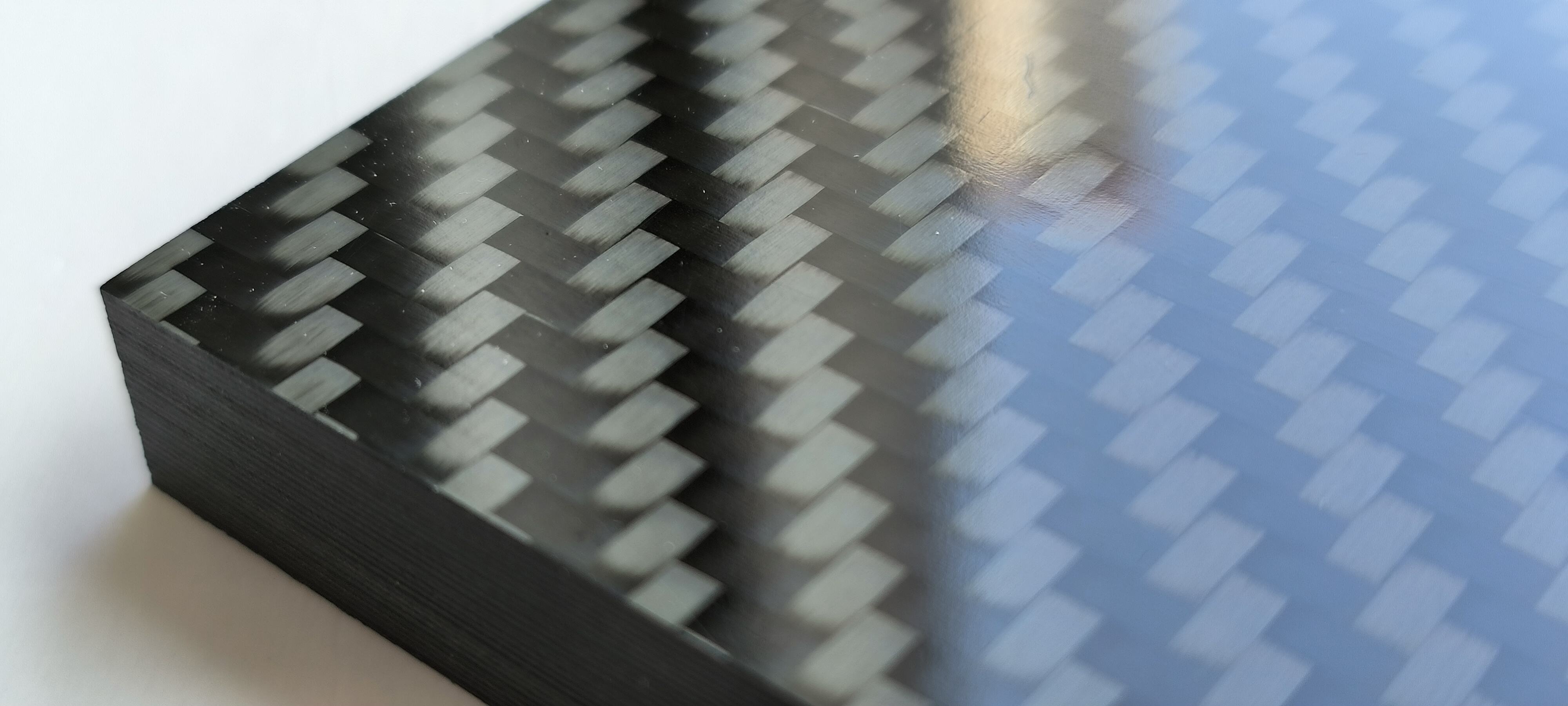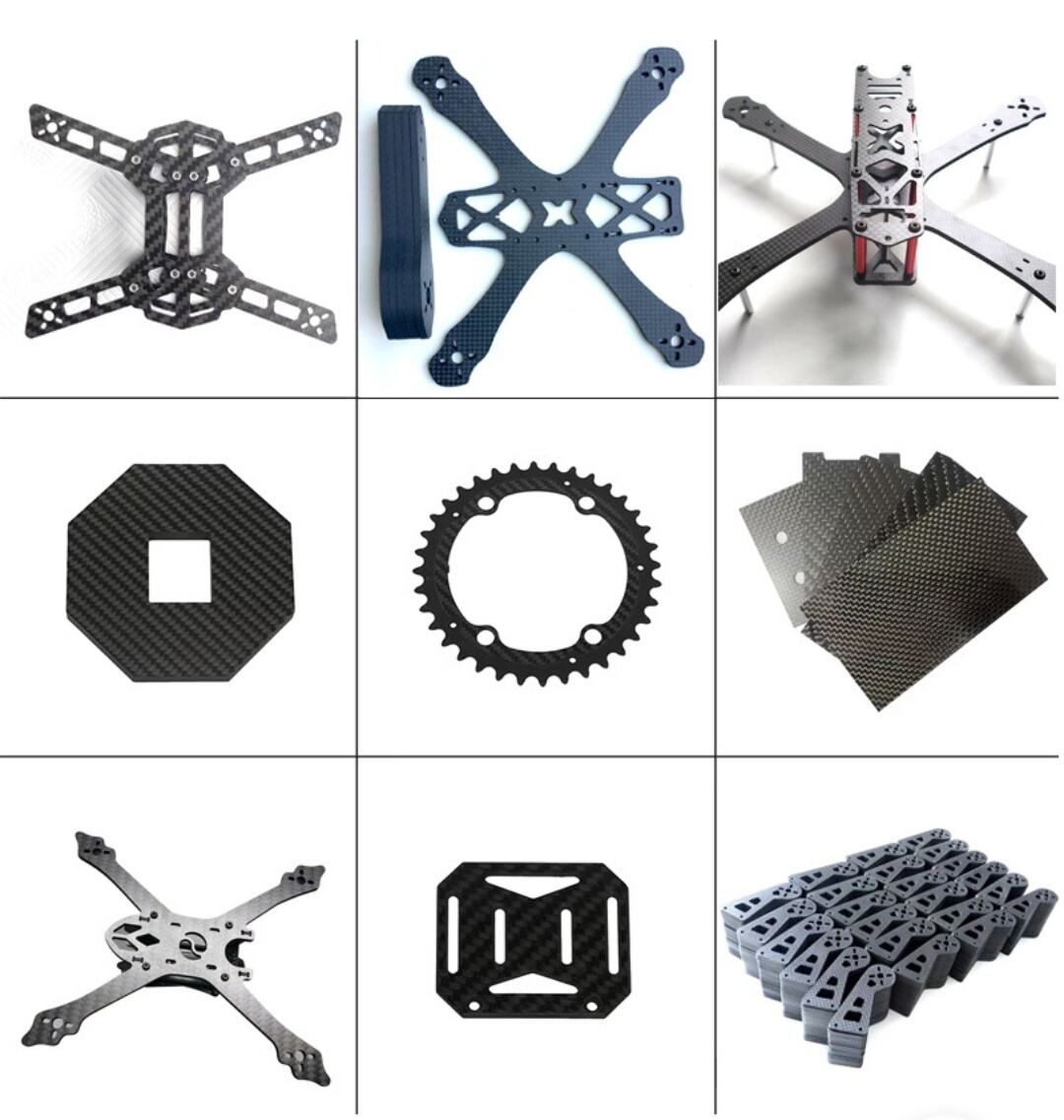Thermoplastic carbon fiber composites are profoundly transforming modern industrial design and the manufacturing of high-performance components. This advanced material perfectly combines the exceptional strength-to-stiffness ratio of carbon fiber with the superior formability and recyclability of thermoplastic polymers, making it the ideal choice for applications demanding lightweighting, high durability, and environmental sustainability.

Thermoplastic Carbon Fiber: Core Advantages
Carbon fiber is renowned for its unparalleled strength-to-weight ratio. When combined with high-performance thermoplastic resin matrices such as PEEK (Polyether Ether Ketone), PPS (Polyphenylene Sulfide), or PA6 (Nylon 6), it forms a composite material that possesses both lightweight characteristics and recycling potential. Thermoplastic carbon fiber plates (prepregs or laminates) are highly favored in fields where performance and efficiency are paramount, such as aerospace, automotive, high-end consumer electronics, and professional sports equipment.
Analysis of Core Forming Processes
The efficient forming of thermoplastic carbon fiber composites relies on several key technologies:
Compression Molding:
Carbon fiber thermoplastic prepreg (fiber fabric/felt pre-impregnated with resin) is placed into a heated mold. High pressure is applied to melt, flow, and solidify the material into shape.
Advantages: Short molding cycles, high surface finish, good dimensional stability.
Typical Applications: Automotive body panels, shell covers, structural supports.
Thermoforming:
A thermoplastic carbon fiber laminate (sheet) is heated overall to the resin's softening temperature. It is then formed into the desired shape using a mold (typically single or matched tooling) via pressure or vacuum.
Advantages: Excels at manufacturing large, thin-walled complex parts; fast production speed; relatively low cost.
Typical Applications: Aircraft interior panels, luggage compartment lids, large housings.
Overmolding / Hybrid Molding:
An innovative hybrid process. First, a pre-formed thermoplastic carbon fiber plate (acting as a skeleton/insert) is placed into a mold. Molten thermoplastic resin is then injected over/around it to integrally form a part with complex functional features.
Advantages: Enables direct integration of functional elements like mounting holes, ribs, snap-fits, soft-touch surfaces onto the carbon fiber base, achieving highly integrated, lightweight complex structures.
Typical Applications: Electronic housings with embedded connectors, structural brackets with localized reinforcements and mounting points, multi-functional handles.
Unparalleled Comprehensive Advantages
Extreme Lightweighting & High Strength: Significantly reduces component weight while meeting stringent structural strength and stiffness requirements – the cornerstone of energy-efficient applications.
Exceptional Recyclability & Sustainability: The thermoplastic matrix can be repeatedly melted and reprocessed, offering a practical solution for the circular economy and reducing environmental footprint.
High Productivity: Significantly shorter forming cycles compared to thermoset composites, better suited for large-scale, automated production, reducing unit energy consumption and cost.
Superior Impact Resistance & Toughness: The thermoplastic resin matrix imparts better energy absorption capability, enhancing part safety and durability under collision or impact loads.
Outstanding Chemical & Environmental Resistance: Strong resistance to moisture, oils, many solvents, and environmental factors, ensuring long-term reliability and lifespan of products in demanding operating conditions.
Wide Range of Applications
The outstanding performance of thermoplastic carbon fiber composites makes them shine in numerous high-end fields:
Automotive Industry: Lightweight door modules, underbody panels, high-performance seat frames, electric vehicle battery pack enclosures and covers.
Aerospace: Lightweight cabin interior panels, robust drone airframes, precision satellite structural components.
Sports & Leisure Equipment: Top-tier racing bicycle frames, high-performance skis/ski poles, safe lightweight helmets, rowing/sculling oar blades.
High-End Consumer Goods & Industrial Equipment: Durable tool housings, thin yet robust electronic device casings (e.g., laptops, phones), high-performance home appliance components.
Challenges & Solutions
Despite significant advantages, the wider adoption of thermoplastic carbon fiber composites faces challenges: higher raw material costs, stringent requirements for temperature/pressure control precision during processing, and substantial initial equipment investment. However, technological innovation is effectively overcoming these hurdles:
Digital Simulation: Advanced process simulation software optimizes forming parameters, reduces trial-and-error costs, and improves yield rates.
Automated Layup & Processing: Technologies like Automated Tape Laying (ATL) and Automated Fiber Placement (AFP) enhance production efficiency and consistency.
Hybrid Process Development: Innovations like overmolding combine the strengths of different processes to create higher-value components.
Material & Process Optimization: Development of more cost-effective matrix resins and optimization of prepreg technology to reduce overall costs.

Future Outlook
With the global demand for sustainability, lightweighting, and high performance continuing to rise, thermoplastic carbon fiber composite technology is poised for accelerated development. Future innovation will focus on:
Higher-Performance Matrix Resins: Development of high-temperature polymers (e.g., upgrades to PEEK, PEKK) for extreme environment applications (high temperature, high corrosion).
Smart Manufacturing & Automation: Deeper automation, in-process monitoring, and closed-loop control for more stable and efficient production.
Integrated Multi-Functional Forming: Development of more advanced hybrid forming technologies to achieve perfect integration of structure, function, and aesthetics in a single process step:
Enhanced Cost Competitiveness: Continuous reduction of overall costs through material innovation, process optimization, and economies of scale, expanding application boundaries.
Conclusion
Thermoplastic carbon fiber composite forming technology is a core pillar of modern lightweight, high-performance, and sustainable manufacturing. Its unique combination of strength, recyclability, and production efficiency gives it a strategic position in industries balancing performance with environmental responsibility. Continuous technological breakthroughs will further unlock its potential, driving its expansion into higher-end, more complex, and more diverse application fields, reshaping the future industrial landscape.
Dr. Reinforcement - Your Trusted Lightweighting Solutions Expert
Email: [email protected]
WhatsApp: +86 191 2115 7199
 Hot News
Hot News